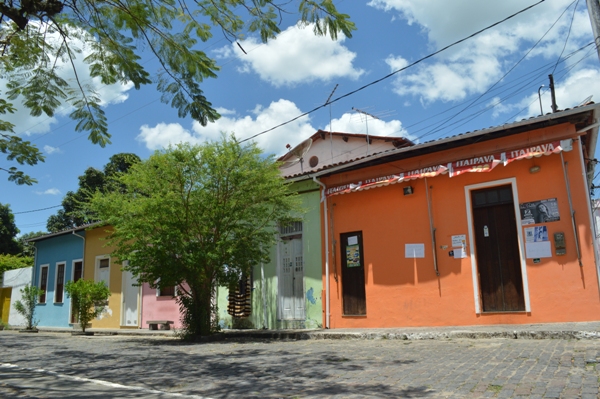It’s hard to imagine it now, but much of the colonial architecture of north-east Brazil is there thanks to a single product: sugar. The Portuguese arrived in the north-east of Brazil in the early 16th century and set up their first capital in Salvador on the shores of Todos os Santos Bay, the largest tropical bay in the world. They had hoped to find gold in their new colony but it was almost 200 years before they would get lucky in that search, further south in the hills of Minas Gerais. They turned their attention instead to sugar.
Sugar cane was planted in much of tropical Brazil, but was especially concentrated around the shores of Todos os Santos Bay. Hundreds of sugar mills were built and the demand for machinery for the mills created an early industrial boom in Europe. And it was to work in the sugar fields that several million slaves were brought to Brazil by the Portuguese, inadvertently creating the ethnic diversity that characterises Brazil today. In Salvador over 80% of the population is black and there is a growing interest among the city’s residents to celebrate and protect the African heritage of the city and the region.
While the grand churches and public buildings in Salvador’s historic Pelourinho district are a visible legacy of the sugar boom years, it’s worth also taking a trip out along the bay to visit the small towns that grew up as a direct result of the sugar farms. Cachoeira is two hours by car or a day’s gentle sailing across the bay and has a town centre that feels stuck in its past. Crumbling facades of houses built during its boom years of sugar and tobacco in the 17th and 18th centuries face grand Baroque churches, set up by the religious orders who were never far away wherever new sources of wealth were discovered.
Arrive in the morning to explore the churches of Cachoeira (opening hours are brief and unpredictable). Pay a visit to the house of the Irmandade Da Boa Morte (Sisterhood of the Good Death) to learn about how Catholicism found a way to co-exist alongside Candomblé, the religion followed by the majority of Africans who came to Brazil.
Cachoeira sits on one side of the Paraguaçu river and is linked by a British-built iron bridge to the town of Sao Felix on the other bank. The main attraction for visitors in Sao Felix is the Dannemann Cigar Factory, set up by a German entrepreneur in the second half of the 19th century and still exporting high quality cigars around the world using locally-grown tobacco. Visitors are free to wander into the factory, watch the women at work chopping the tobacco leaves and rolling the cigars. Some of the ladies even smoke their products on the job.
You can visit Cachoeira and Sao Felix as part of a visit to Salvador. Visit our site for example itineraries for holidays to Brazil.






